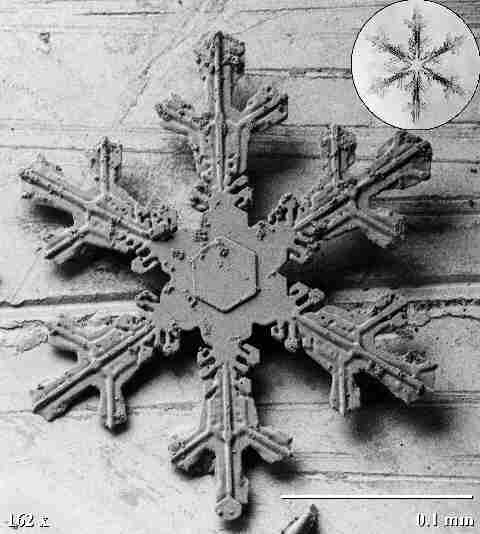 SNOW HYDROLOGY (GEOG 4321): HOMEWORK ASSIGNMENT 2
SNOW HYDROLOGY (GEOG 4321): HOMEWORK ASSIGNMENT 2
Instuctor: Mark Williams
Telephone: 492-8830
Homework 2
- Assigned 31 January.
- Due 4 February by 4pm.
- There are 40 possible points.
- SHOW ALL YOUR WORK.
- WRITE NEATLY and LEGIBLY.
- WRITE THE QUESTION AT THE START OF EACH ANSWER.
- Suppose you skied up to Niwot Ridge and drank all the liquid in your
1 liter water bottle, then tightly replaced the cap. Calculate the new volume
of your water bottle upon returning to Boulder, using the Ideal Gas Law. Assume
that at Niwot Ridge the air temperature was -10degC and atmospheric pressure
was 0.5 atm; in Boulder the air temperature was +27degC and atmospheric pressure
was 0.9 atm (5 points).
- The Green Lakes Valley is located within the city of Boulder Watershed,
consequently, it is an important source of water for the City of Boulder.
Calculate mean SWE, density, and temperature for Green Lakes Valley, April
1996. To do so, use data from 10 snowpits located throughout the valley. Go
to the NWT LTER web page at http://culter.colorado.edu/NWT/index.html. Enter
the new site, under Data select Available Data, then
Hydrology, then Niwot Ridge/Green Lakes Valley snow
cover profiles: Snow water equivalent data.
- The ten snowpits located in Green Lakes Valley are: AVN, AVV, G3N,
G3S, G3V, G4S, G4V, G5N, G5S, and G5V. Each of the ten pits was sampled on
either 23 or 24 April, 1996. Calculate the mean, standard deviation, and standard
error for snow depth,density, temperature and SWE at the ten pits.
- Snowpit 006 is an "index" snowpit that we sample weekly with the
hope that it represents the Niwot Ridge saddle and Green Lakes Valley. Compare
the mean results from the ten Green Lakes Valley sites for snow depth, SWE,
temperature and density to that of pit 006 on 25 April 1996. Are these values
from pit 006 representative of the average Green Lakes Valley snowpack parameters
you calculated from the ten snowpits above? Give your answer in five sentences
or less (10 points total).
- How well do SnoTel sites work for measuring SWE? Here we will compare
manual SWE measurements made at snow courses to measurements made at automated
SnoTel sites. Assume that SWE measured at snow courses is the "true" SWE measurement.
At Wolf Creek pass
, compare annual SWE measurements made in April from snow course data (independent
variable) to SnoTel data (dependent variable) (10 points total) .
- Regress SnoTel annual SWE values against snow course data.
- Show graph with regression line.
- what is the r-squared?
- what is the slope of the regression line?
- what is the y-intercept of the regression line?
- is this a significant relationship between the SnoTel and snow
course data?
- Compare SnoTel and snow course annual SWE values using a paired-difference
t-test.
- What is the mean of the difference between the two methods?
- What is the standard deviation of the difference between the
two methods?
- What is the t-statistic?
- Is the SnoTel measurement of SWE significantly different than
the snow course measurement of SWE at the 0.05 probability level?
- 4. A Proposal has been made to replace all snow courses in the western
US with SnoTel sites. Use the results from the statistical analyses in question
3 as well as your knowledge of the advantages and disadvantages of SnoTel
and snow course measurement systems to answer the following questions
(10 points) :
- In terms of the accuracy of the data being collected what would
the consequences of this move be? In other words are SnoTel sites a good substitute
for snow courses in terms of both the magnitude of SWE measured at the site
each year and the interannual trends in the SWE record?
- What are some of the functional disadvantages of SnoTel sites as
compared to snow courses?
- What is the temperature range and supersaturation range where dendritic
snow crystals are found (5 points) ? Answer is in the Avalanche Handbook;
in the Earth Sciences Reserve Book room.
 SNOW HYDROLOGY (GEOG 4321): HOMEWORK ASSIGNMENT 2
SNOW HYDROLOGY (GEOG 4321): HOMEWORK ASSIGNMENT 2  SNOW HYDROLOGY (GEOG 4321): HOMEWORK ASSIGNMENT 2
SNOW HYDROLOGY (GEOG 4321): HOMEWORK ASSIGNMENT 2